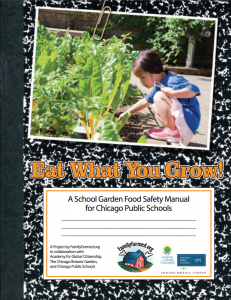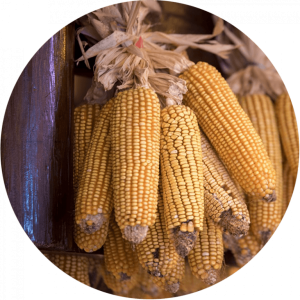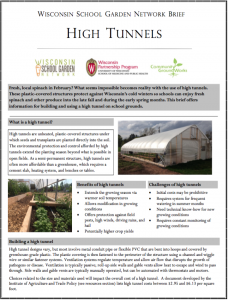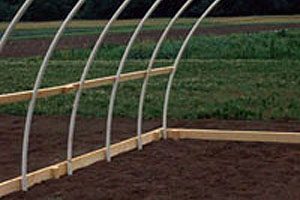 Eat What You Grow! produced a comprehensive list of required food safety protocols for garden operators. By having a set of approved guidelines that all garden participants and foodservice staff implement, school gardens can safely supply our school cafeterias with student and community grown produce and will assure school administrators, teachers, parents and students that the produce grown is handled with the utmost attention to safety. Note that these standards are based on guidelines for Chicago Public Schools. View Resource »
Eat What You Grow! produced a comprehensive list of required food safety protocols for garden operators. By having a set of approved guidelines that all garden participants and foodservice staff implement, school gardens can safely supply our school cafeterias with student and community grown produce and will assure school administrators, teachers, parents and students that the produce grown is handled with the utmost attention to safety. Note that these standards are based on guidelines for Chicago Public Schools. View Resource »
Preserving the School Garden Harvest
 Drying your harvest is a great way to preserve your garden’s bounty to use throughout the winter — and a fun classroom activity as the weather starts to turn colder! This resources includes step-by-step instructions for drying a variety of foods, as well as some hints towards lesson ideas about the history of drying food. View Resource »
Drying your harvest is a great way to preserve your garden’s bounty to use throughout the winter — and a fun classroom activity as the weather starts to turn colder! This resources includes step-by-step instructions for drying a variety of foods, as well as some hints towards lesson ideas about the history of drying food. View Resource »
High Tunnels
 Fresh, local spinach in February? What seems impossible becomes reality with the use of high tunnels. These plastic-covered structures protect against Wisconsin’s cold winters so schools can enjoy fresh spinach and other produce into the late fall and during the early spring months. This brief offers information for building and using a high tunnel on school grounds. Download Brief »
Fresh, local spinach in February? What seems impossible becomes reality with the use of high tunnels. These plastic-covered structures protect against Wisconsin’s cold winters so schools can enjoy fresh spinach and other produce into the late fall and during the early spring months. This brief offers information for building and using a high tunnel on school grounds. Download Brief »
How to Build a Hoop House
 Hoop Houses (plastic covered tunnels) are a great way to protect plants from the cold, lengthen your growing season in both fall and spring, and potentially increase the yields of produce growing in your garden. In this video, experts share how they constructed hoop houses in the People’s Garden at USDA Headquarters. View Resource »
Hoop Houses (plastic covered tunnels) are a great way to protect plants from the cold, lengthen your growing season in both fall and spring, and potentially increase the yields of produce growing in your garden. In this video, experts share how they constructed hoop houses in the People’s Garden at USDA Headquarters. View Resource »
Constructing a Simple PVC High Tunnel
 This low-cost, 30’ long by 18’ wide PVC high tunnel is constructed using PVC pipe for hoops. A crew of four can easily construct a high tunnel of this design in a single day, and a single person can do the majority of the construction! View Resource »
This low-cost, 30’ long by 18’ wide PVC high tunnel is constructed using PVC pipe for hoops. A crew of four can easily construct a high tunnel of this design in a single day, and a single person can do the majority of the construction! View Resource »
